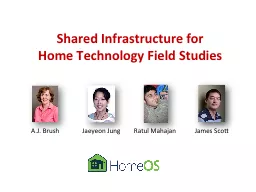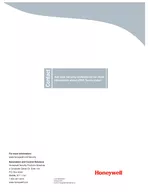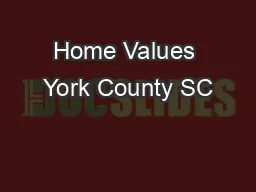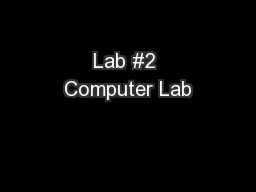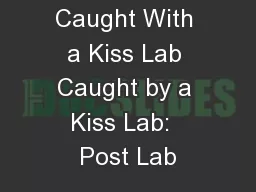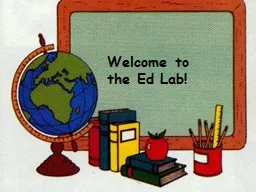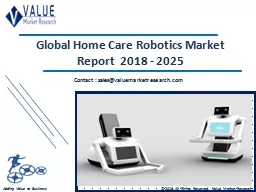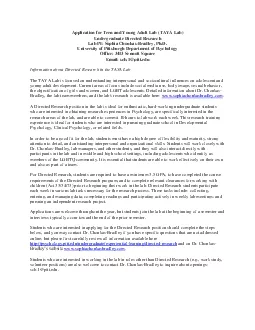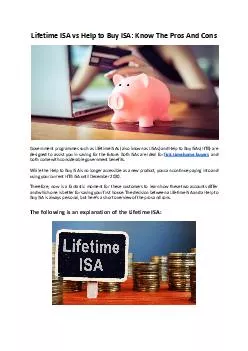PPT-Home Lab:
Author : pamella-moone | Published Date : 2016-07-13
Shared Infrastructure for Home Technology Field Studies AJ Brush Jaeyeon Jung Ratul Mahajan James Scott Its hard to do field studies in homes at least thats our
Presentation Embed Code
Download Presentation
Download Presentation The PPT/PDF document "Home Lab:" is the property of its rightful owner. Permission is granted to download and print the materials on this website for personal, non-commercial use only, and to display it on your personal computer provided you do not modify the materials and that you retain all copyright notices contained in the materials. By downloading content from our website, you accept the terms of this agreement.
Home Lab:: Transcript
Download Rules Of Document
"Home Lab:"The content belongs to its owner. You may download and print it for personal use, without modification, and keep all copyright notices. By downloading, you agree to these terms.
Related Documents

